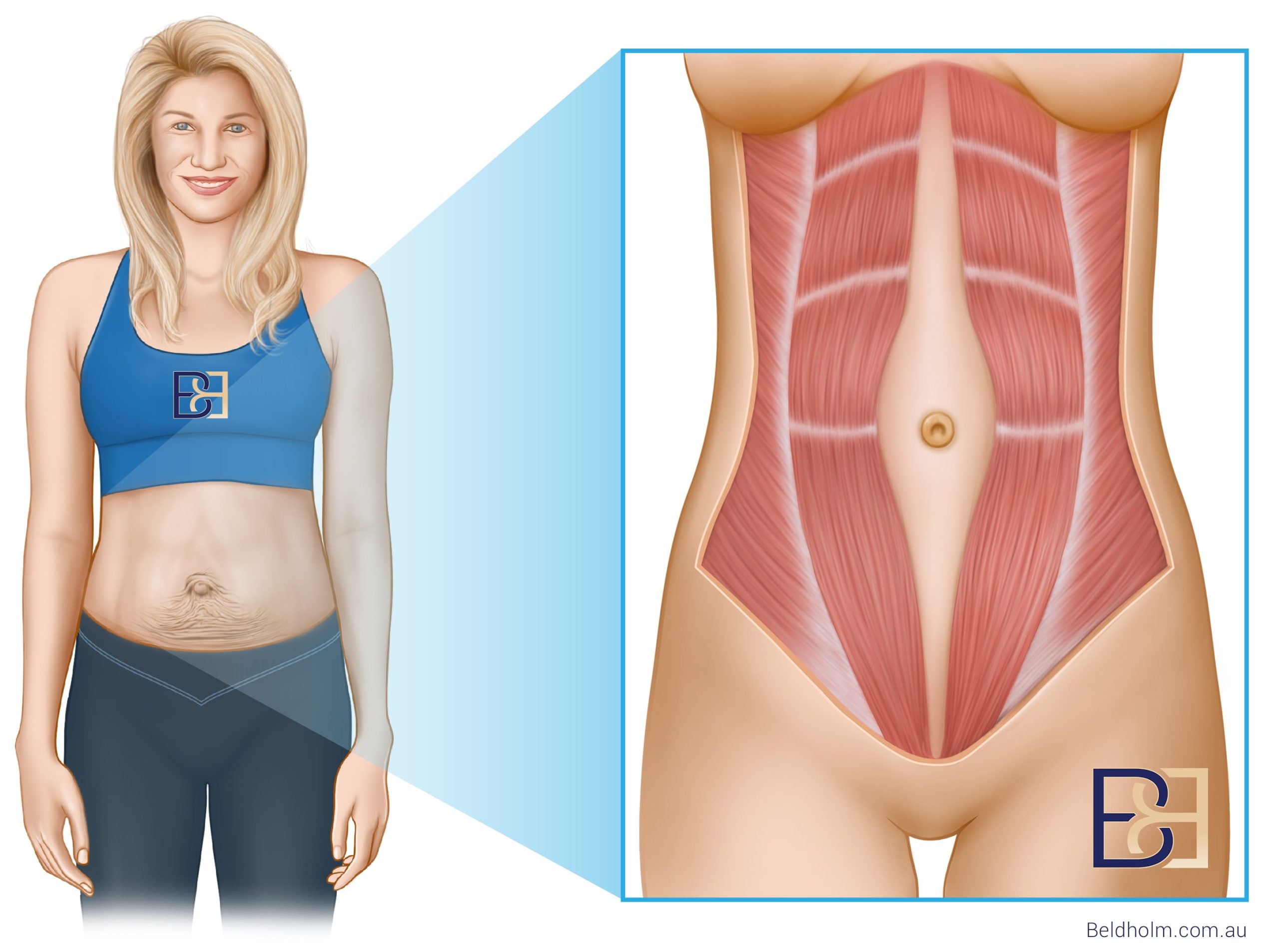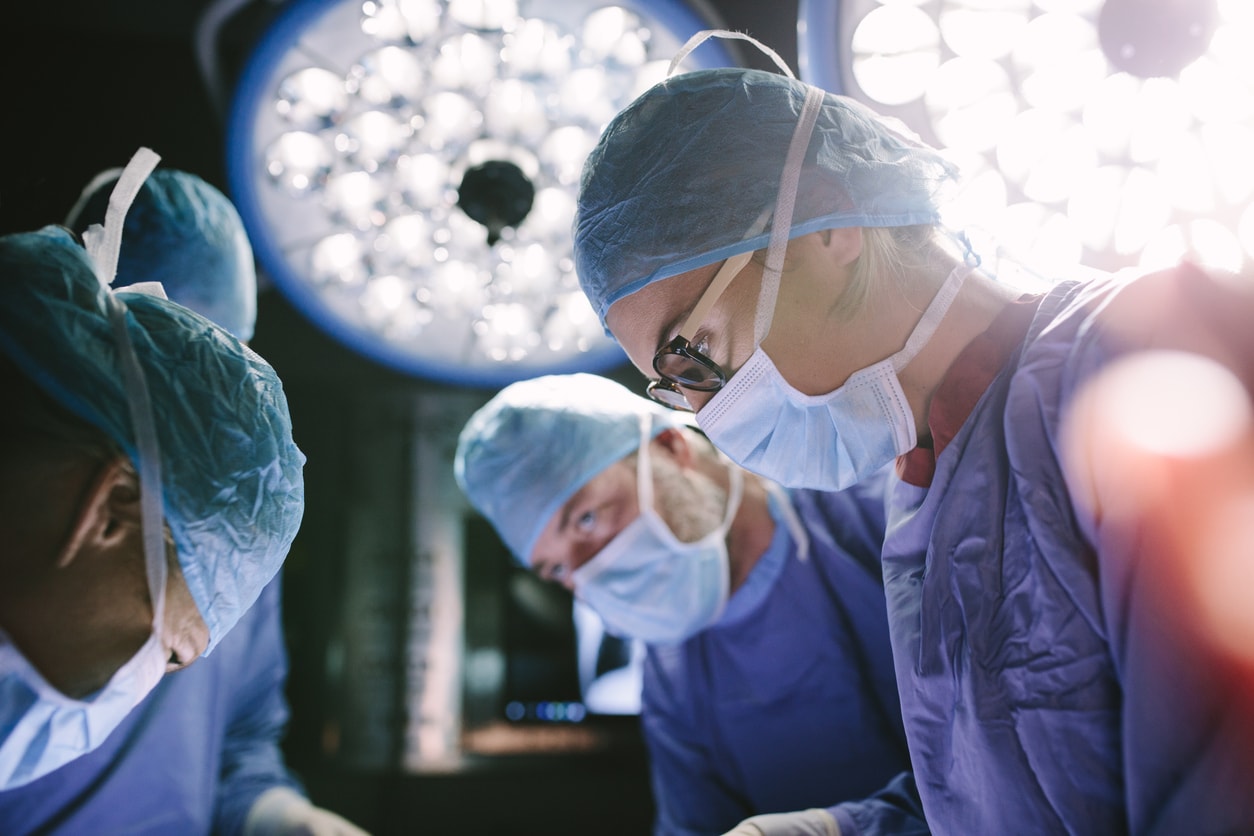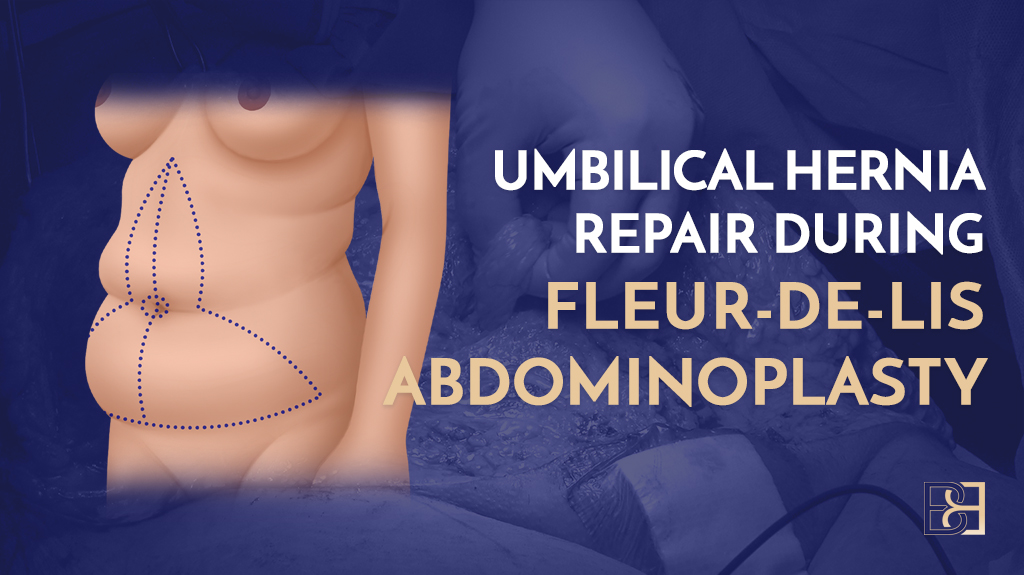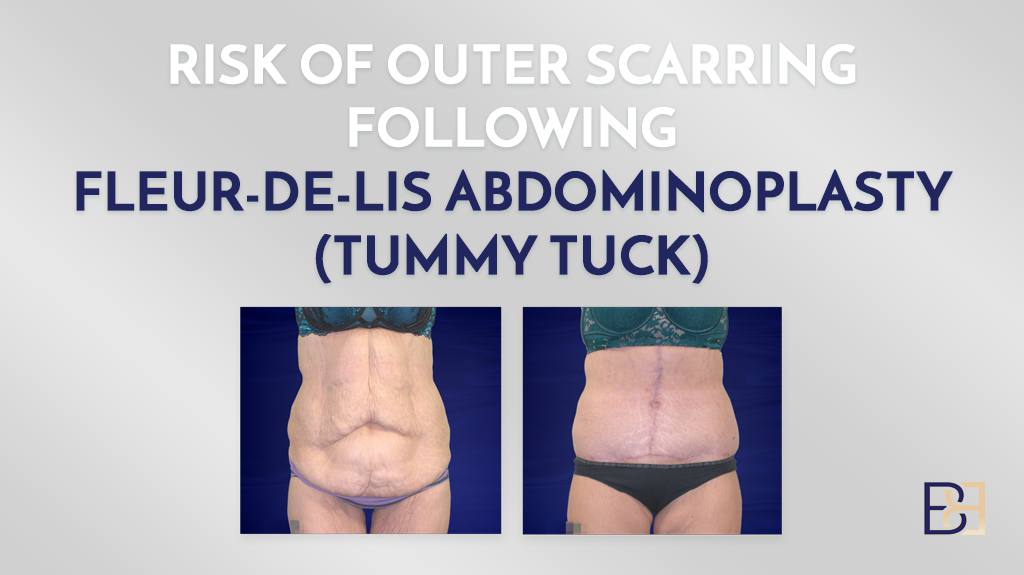Fleur-de-Lis abdominoplasty is a specialised procedure that removes excess skin and fatty tissue, usually after massive weight loss. It removes loose skin in the abdomen, reshaping it into a more contoured and aesthetically pleasing appearance. Therefore, Fleur-de-Lis abdominoplasty is ideal for patients who have undergone extreme changes in weight.
Book your appointment online now
Despite the results of FDL surgery being long-lasting, however, long-term success depends on maintaining a stable weight after the surgery. Regaining weight after FDL abdominoplasty surgery can lead to the recurrence of loose skin, accumulated fat, and restretched and loose abdominal muscles, resulting in a loss of your hard-earned results.
When patients who have experienced significant weight loss undergo fleur de lis surgery, the ramifications of regaining that lost weight can be quite extensive. In the article, I’ll elaborate more about the possible ramifications of regaining weight post-Fleur-de-Lis abdominoplasty and the importance of maintaining a stable weight.
Understanding the Impact of Weight Regain Post-Surgery
The Nature of FDL Surgery Results
Fleur-de-Lis abdominoplasty removes loose excess skin and tightens the abdominal wall to provide a more defined and contoured abdominal appearance. The procedure treats both horizontal and vertical skin laxity, making it suitable for patients who have experienced significant weight loss.
It’s important to note that massive weight loss patients, especially patients who lose weight after having undergone bariatric surgery, gastric bypass, and other substantial weight loss surgeries, experience both horizontal and vertical skin laxity. Horizontal skin laxity can be challenging to treat with standard abdominoplasty procedures, hence requiring Fleur-de-Lis procedure.
Though Fleur-de-Lis surgery offers long-term results, they are not entirely permanent. A key determinant of post-surgical results after FDL surgery is weight regain. Removal of the existing excess loose abdominal skin and excess tissue in the abdomen doesn’t prevent excess fat re-accumulation, which may affect the results.

How Weight Regain Affects the Body
While gaining just a few kilograms will not affect your results, a significant amount of weight gain can cause fat accumulation within the residual fat cells, which upsets the toned abdominal appearance achieved by the weight loss surgery. In addition to fat accumulation, weight gain stretches the skin, leading to the recurrence of loose skin.
Too much weight gain will stretch the abdominal skin and may cause muscle separation.
Determining the amount of weight gain that is considered “too much,” however, can be challenging since it depends on individual factors. Most specialist surgeons note that the ideal weight gain to consider as significant is approximately ten kilograms and it’s likely to affect the procedure’s results.
Note that significant weight gain may cause a recurrence of complications, including abdominal muscle separation (diastasis recti). These potential complications can be severe, necessitating revision abdominoplasty. Therefore, I always stress that patients should maintain a stable weight after a tummy tuck (Abdominoplasty) procedure.
It’s important to also note that major weight loss after an FDL surgery can also influence results. Medical weight loss injections, such as semeglutide or other GLP-1 agonists that speed up the process of losing weight, have not only become popular, but are more readily available than ever. Therefore, it’s best to complete your weight loss treatments before undergoing an FDL procedure or discuss your plans during our consultation so we can tailor a strategy.
If you lose a considerable amount of weight after the procedure, the skin, which has already been stretched over time and may have reduced elasticity, might not contract enough to maintain initial results, and additional surgeries could be needed, which is why it’s important to attain your goal weight before undergoing the procedure.
Impact on Surgical Scars
Weight fluctuations could also alter the appearance and healing of surgical scars. As the skin surface stretches, surgical scars will also widen and become more prominent. This might lead to raised, thickened, or irregular scars that could distort the achieved aesthetic outcome of the procedure.
Note that FDL surgery results in an extensive, “inverted T” shaped scar, across the lower and upper abdomen. The extensive scar is due to the procedures unique horizontal incision and vertical incision to treat both horizontal and vertical skin laxity. Any undue impact exerted on the scar will make it more conspicuous, unpleasant, and challenging to treat. Therefore, it is important to maintain stable weight to ensure a proper scar healing process and reduce the chance of scar distortion requiring scar revision.
A study published by PubMed on scar revision after abdominoplasty notes, “many scar revision techniques have been described including excision and direct closure, dermis enhancement (dermal tube, double-breasting, and dermal graft), local flaps (Z-plasty, W-plasty, and other variants), fillers and tissue expansion.”
Physical and Aesthetic Ramifications
Loss of Shape
Fleur-de-Lis abdominoplasty (tummy tuck) involves removing excess abdominal fat and loose skin, tightening the abdominal region to give it a contoured look. The invasive surgery targets both the upper and lower abdomen. Weight regain following Fleur-de-Lis may distort the contoured results of the abdominal contour surgery. This will result in a less defined and irregular abdominal contour.
In addition, the weight may distribute unevenly in the body, settling in areas where it was never problematic prior to surgery. This may result in an unbalanced or disproportionate appearance that undermines the primary goal of undergoing Fleur-de-Lis abdominoplasty.
Skin Laxity
The primary goal of undergoing Fleur-de-Lis surgery is to treat skin laxity. However, as you regain weight, the skin on the abdomen stretches out once more, and the skin laxity may return. This is particularly a concern because this skin has been surgically tightened and may not have as much elasticity to snap back into place. Therefore, you may develop new areas of redundant skin that could necessitate additional corrective surgeries.
Diastasis Recti (Muscle Separation)
Substantial weight gain after an FDL surgery may increase the risk for Diastasis Recti (separation of the abdominal muscles). Fleur-de-Lis abdominoplasty involves abdominal muscle repair, correcting this condition. However, substantial weight gain may result in weakening or stretching of the repaired abdominal muscles, causing diastasis recti to recur.
Diastasis recti mainly results in a protruding abdomen, affecting the achieved contoured abdominal look. Additionally, diastasis recti impair core strength, increasing the risk of back pain, posture issues, and other functional difficulties. This impairs daily activities that require core stability.
Health Ramifications
Risk of Complications
Regaining weight after FDL surgery can lead to complications. A key complication is abdominal hernias resulting from weakened and stretched abdominal muscles. Abdominal hernia is a condition where the abdominal tissues push through separated or weakened abdominal muscles causing a bulge in the abdomen.
In addition, weight gain can result in obesity-related complications such as cardiovascular diseases, hypertension, and type 2 diabetes. These conditions pose a serious health risk and also impact the overall success of the surgery, recovery, and long-term results.
Emotional and Psychological Effects
Regaining weight following FDL surgery will often undo many of the positive outcomes of the surgery, which can cause emotional and psychological repercussions. Some patients who regain weight after FDL surgery may have feelings of frustration or disappointment. These types of setbacks are quite capable of causing emotional side effects.
Long-Term Maintenance Strategies
Weight regain following Fleur-de-Lis abdominoplasty results in several consequences. Therefore, I always recommend that my patients prioritise maintaining a stable weight after FDL surgery and minimise the risk of weight regain.
Below are ways to maintain a stable weight after Fleur-de-Lis surgery.
Lifestyle Considerations After Fleur-de-Lis Abdominoplasty
Maintaining the outcomes of Fleur-de-Lis abdominoplasty involves ongoing attention to lifestyle habits. While the procedure removes excess skin and fat, it does not prevent future weight changes. Maintaining a stable weight may help support the long-term results of surgery.
This can involve consuming a balanced diet that includes a variety of nutrient-dense foods such as lean protein sources, vegetables, fruits, whole grains, and unsaturated fats. Portion awareness is also important, as consuming more energy than the body requires — even from nutrient-dense foods — may contribute to weight gain.
It may be helpful to limit foods high in added sugars, refined carbohydrates, and heavily processed ingredients. Adequate hydration and regular physical activity can also support general wellbeing.
Exercise and Physical Activity
Once given the green light by me after surgery, exercising regularly will help maintain a toned abdomen. Cardio exercises, such as walking, swimming, or cycling, are helpful in burning calories and increasing your metabolism rate. For maximum results in keeping your muscles intact while burning all the fat for long-term stability, I advise you to combine cardio and strength training exercises at least three to five times a week. Also, include gentle exercises, like yoga, for flexibility, core strength, and muscle tone.
However, avoid extreme exercises and physical activities that may exert undue pressure on the core before full recovery. My recommendation is that patients ease slowly into the exercise routine, one step at a time.
Monitoring and Preventing Weight Gain
Regular weight monitoring may facilitate the early detection of small weight gains before they become clinically significant. You can monitor your weight through weekly weighing or even just keeping track of the way your clothes fit. This way, if you notice slight weight gains, you can catch it before it gets out of hand by adjusting your diet or increasing your activity level.
I always emphasise that it’s crucial to make feasible lifestyle changes for the long-term rather than attempting temporary crash diets that can backfire. Habits like mindful eating, choosing nutrient-rich foods, and maintaining a regular fitness routine that suits your lifestyle are more sustainable than trendy, over-the-top diets and exercise gimmicks and are effective for preserving the results of surgery. Additionally, it’s important to maintain good sleeping habits, limit alcohol intake, avoid smoking of any kind, and stay hydrated.
Psychological Support
It is also important to consider the psychological aspect of weight management following Fleur-de-Lis abdominoplasty. Weight changes after surgery may contribute to feelings such as frustration or disappointment, which can affect self-perception and motivation. In some cases, this may lead to behaviours such as emotional eating.
Seeking support from a qualified mental health professional or support group may assist in developing strategies to manage emotional responses and maintain sustainable habits over time.

Download our infographic: “15 Exercises to Try After Abdominoplasty”
Options if Weight is Regained
Massive weight gain after Fleur-de-Lis abdominoplasty could necessitate additional procedures such as revision abdominoplasty surgery or non-surgical treatments.
Revisions and Secondary Surgeries
There are instances where a patient has regained massive weight that severely distorts the results of FDL surgery. In such cases, revision abdominoplasty is a viable option. Revision surgery involves removing the additional skin and re-tightening the abdominal muscles.
However, revision surgery poses higher risks of infection, scarring, and a long recovery compared to the primary procedure. It’s important to note that any successive surgery poses additional stress to the body and increases the risk of complications. Great care should be taken to avoid revision surgery, and a decision to follow this path should involve an experienced specialist surgeon.
Before considering revision surgery, you must weigh the benefits against the risks involved. Also, you must determine whether you’re ready to make the lifestyle changes necessary to sustain the new results.
Non-Surgical Alternatives
Some patients may want to avoid revision surgery following weight gain after FDL surgery. In such cases, non- or less-invasive procedures, such as suction-assisted lipectom (liposuction) or laser therapy are options.
Suction-assisted lipectomy (liposuction) helps remove localised fat deposits from the required regions but doesn’t treat skin laxity. On the other hand, non-invasive body contouring procedures like laser treatments can reduce accumulated fat and attend to some degree of skin laxity.
These treatments pose less risk and recovery compared to invasive surgical treatments, but the results from these procedures tend to be more limited.
Other Alternatives
If there is weight regain following a Fleur-de-lis surgery, the least invasive and disruptive alternatives include a sustainable diet rich in nutients and low in sugar and carbohydrates and an exercise routine. Patients are advised to consult a nutritionist who can help design a specific meal plan that emphasises whole foods, lean proteins, and fruits and vegetables to assist them in managing their weight for the long term.
Setting Realistic Goals
Setting realistic goals and sticking to them before and after undergoing Fleur-de-Lis abdominoplasty is important. This is key in ensuring you maintain the FDL surgery results. Some of these goals to ensure you avoid weight regain and sustain the surgery results include:
Avoid Fad Diets
One of the most important aspects of long-term weight management after surgery is avoiding yo-yo or fad dieting. Instead, focus on sustainable eating habits that can be maintained for the long-term.
Quick-fix diet trends might seem tempting, but they often lead to temporary results and can harm long-term success. Many of these quick-fix diets are restrictive and difficult to maintain, causing you to regain the weight as soon as you return to your normal eating habits.
Gradual, steady weight management is more effective and sustainable for preserving the results of FDL surgery and preventing unnecessary stress on your skin and muscles.
Practice Patience
Achieving and maintaining your weight and shape after surgery requires patience. Immediate results may be visible, but it’s essential to recognise that lasting change takes time. Whether you’re maintaining your weight or working to shed a few kilos, focus on gradual progress and celebrate small victories along the way, as this is key to long-term success and well-being.
Don’t Compare Yourself with Others
Everyone’s body responds differently to weight management, and comparing yourself to others can lead to frustration or discouragement. Factors like genetics, age, and lifestyle all play a role in how your body changes after a body contouring surgery. Instead of focusing on how others look or the speed of their progress, concentrate on your own journey and set personal goals that align with your body’s needs.
FAQs
Does Getting Pregnant Affect my Fleur-de-Lis Surgery affect my Results?
Pregnancy leads to weight gain. Therefore, becoming pregnant after an FDL surgery will result in the skin and muscles stretching out, which will affect the results of the procedure.
In addition, weight gain from multiple pregnancies may lead to loose skin, accumulated fat in the abdomen, a recurrence of diastasis recti, hernia, and can impact scarring. Therefore, I always recommend putting off undergoing Fleur-de-Lis surgery until you have no future plans of getting pregnant.
What Weight Gain Should I Consider Too Much?
Most specialist surgeons note that the amount of weight gain likely to affect the results of a Fleur-de-lis abdominoplasty surgery is approximately 10 kilograms.
Will I need Revision Surgery After Weight Gain Post FDL surgery?
The answer is yes and no. The primary way to remove excess skin resulting from weight gain after FDL surgery is through revision surgery. However, some patients may prefer non-surgical procedures.
Revision surgery is necessary where the effects of weight gain cannot be managed through non-surgical procedures.
Dr. Beldholm’s Final Thoughts

Weight gain following Fleur-de-Lis abdominoplasty may have both physical and psychological impacts. While the procedure removes excess abdominal skin and fat, it does not prevent these concerns from returning in the future.
Significant weight changes may contribute to the recurrence of abdominal fat, skin laxity, or abdominal wall separation. These changes can potentially affect the appearance of the surgical area and the perceived outcome of the procedure. Emotional responses such as frustration or reduced motivation may also occur.
Adopting long-term lifestyle habits, including a balanced diet, physical activity, and psychological support, may help support weight stability over time and assist with maintaining surgical outcomes.
To learn more about maintaining a stable weight and the available options to prevent weight gain after Fleur-de-lis abdominoplasty, book a consultation today.
Resources
- Dellon A. L. (1985). Fleur-de-lis abdominoplasty. Aesthetic plastic surgery, 9(1), 27–32.
- Miranda, B. H., Allan, A. Y., Butler, D. P., & Cussons, P. D. (2015). Scar Revision Surgery: The Patient’s Perspective. Archives of plastic surgery, 42(6), 729–734.
- ElAbd, R., AlMojel, M., AlSabah, S., AlRashid, A., AlNesf, M., Alhallabi, B., & Burezq, H. (2022). Complications Post Abdominoplasty After Surgical Versus Non-surgical Massive Weight Loss: a Comparative Study. Obesity surgery, 32(12), 3847–3853.
- Friedman, T., O’Brien Coon, D., Michaels V, J., Purnell, C., Hur, S., Harris, D. N., & Rubin, J. P. (2010). Fleur-de-Lis abdominoplasty: a safe alternative to traditional abdominoplasty for the massive weight loss patient. Plastic and reconstructive surgery, 125(5), 1525–1535.
- Mitchell, R. T., & Rubin, J. P. (2014). The Fleur-De-Lis abdominoplasty. Clinics in plastic surgery, 41(4), 673–680.
- Nahas F. X. (2002). Pregnancy after abdominoplasty. Aesthetic plastic surgery, 26(4), 284–286.
- Michalska, A., Rokita, W., Wolder, D., Pogorzelska, J., & Kaczmarczyk, K. (2018). Diastasis recti abdominis – a review of treatment methods. Ginekologia polska, 89(2), 97–101.
- Hall H, Sanjaghsaz H. Diastasis Recti Rehabilitation. [Updated 2023 Aug 8].
- Mensching, J. J., & Musielewicz, A. J. (1996). Abdominal wall hernias. Emergency medicine clinics of North America, 14(4), 739–756.
- Pandya, B., Huda, T., Gupta, D., Mehra, B., & Narang, R. (2021). Abdominal Wall Hernias: An Epidemiological Profile and Surgical Experience from a Rural Medical College in Central India. Surgery journal (New York, N.Y.), 7(1), e41–e46.
- Ziegler, U. E., Ziegler, S. N., & Zeplin, P. H. (2017). Modified Fleur-de-lis Abdominoplasty for Massive Weight Loss Patients. Annals of plastic surgery, 79(2), 130–134.
- Bunting, H., Lu, K. B., Shang, Z., & Kenkel, J. (2020). Vertical Abdominoplasty Technique and the Impact of Preoperative Comorbidities on Outcomes. Aesthetic surgery journal. Open forum, 3(1)
- Cormenzana P. (2010). Revision abdominoplasty and proper umbilical positioning. Clinics in plastic surgery, 37(3), 541–546.
- Kadri, O. M., Moosa, S., & Mofid, M. M. (2013). Abdominoplasty revision using tissue expansion. Aesthetic plastic surgery, 37(3), 538–540.




